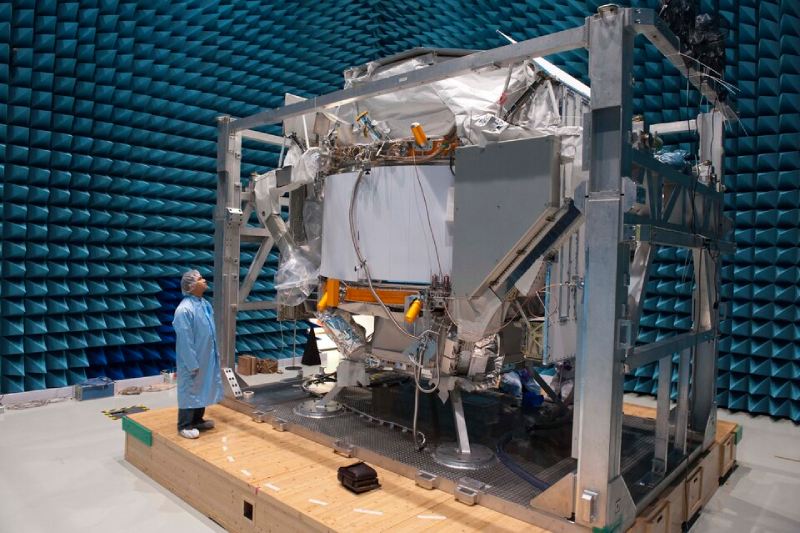The International Space Station (ISS) received the Alpha Magnetic Spectrometer (AMS) in 2011. More than 200 billion cosmic ray events have been recorded since then, and while the majority of these events have known causes, a small number of signatures in the data may indicate the presence of dark matter. Scientists will be able to look into this more after the detector received its most recent modification.
When cosmic ray particles from the Sun or distant sources, including stars that explode as supernovae or black holes, reach Earth, they are collected by AMS. Protons make up the majority of the cosmic rays that AMS detects, but it also occasionally picks up heavier nuclei like silicon or iron. But one signature stands out as really interesting. Positrons are electrons’ antimatter counterparts, and AMS has found an exceptionally high flux of these particles. Due to their rarity in the universe, antimatter particles such as photons and pions are not predicted to be detected in the recorded data at the strength determined by AMS.Their origins is yet unknown, but possibilities include dark matter, pulsars—rapidly spinning stars that periodically generate signals—or some other unidentified astronomical entity. The observed positron flow is in excellent agreement with models of dark matter. However, the AMS partnership is currently working on repairing the detector to better study this.
A new detector layer with more silicon strips will be the key improvement, increasing by 300% the acceptance of recording infalling particles. According to AMS spokesman Sam Ting (MIT), “by 2030, AMS will extend the energy range of the positron flux and reduce the error by a factor of two compared with current data.” This will enable further investigation of the positron signature by the detector.
Three additional radiative surfaces will be a significant addition as well. AMS was painted white to deflect extra heat and maintain operating temperatures because it is exposed to bright sunlight. The paint has deteriorated after 13 years in the harsh temperatures of space, therefore the new radiators will make up for it and keep AMS cool once more.
All of the components of the new upgrade—hardware and electronics included—are now being developed as “validation” and “qualification” models. The final flight model will be put into production if all of the tests being conducted at CERN, INFN Perugia, and IABG in Germany are successful. The prototypes are already being used by astronauts for training in space-like conditions on Earth. When the upgrade is launched in 2026, the astronauts will use spacewalks to install the new detector components onto AMS. “Everything is moving very, very quickly,” says Corrado Gargiulo, chief engineer at CERN.
“This is a must; otherwise, the upgrade won’t make sense when we get to the ISS too late.” Yes, there is now a deadline for the mission. Since the ISS is not expected to be removed from orbit until 2030, there will be a lot of cosmic ray events for AMS to record in order to investigate the positron signature.
A prototype detector for the upcoming AMS upgrade, scheduled to be placed on the next planned AMS spacewalk. To restore AMS’s ideal thermal performance, a sizable power distribution system (PDS) radiator is included in the upgrade.
Topics #AMS #ISS










